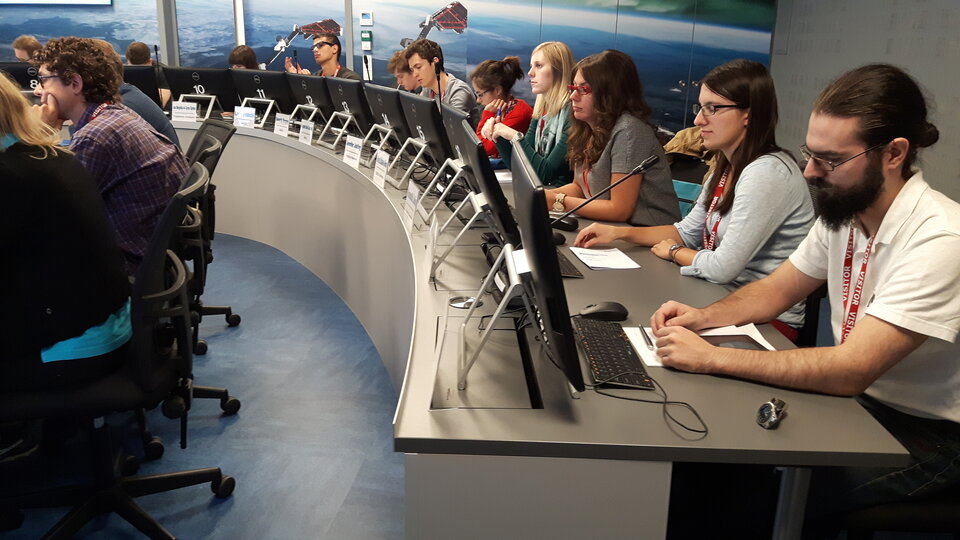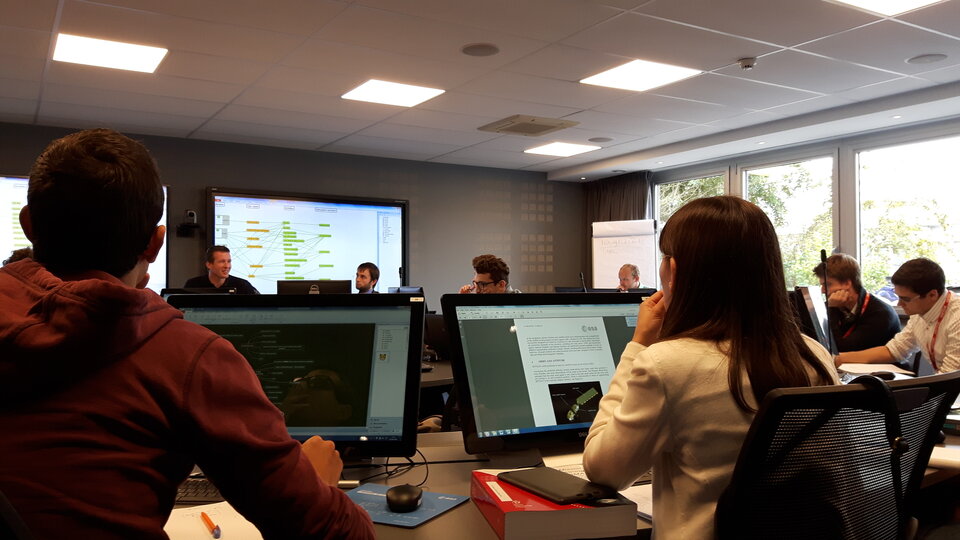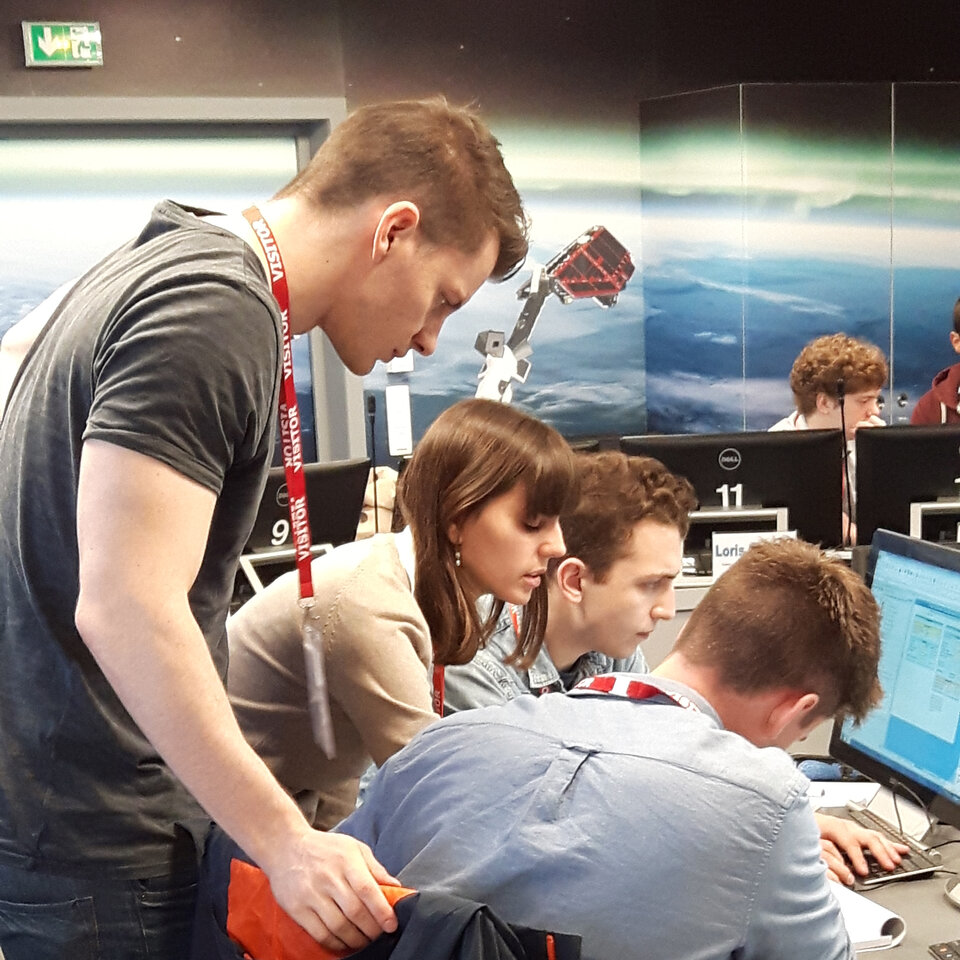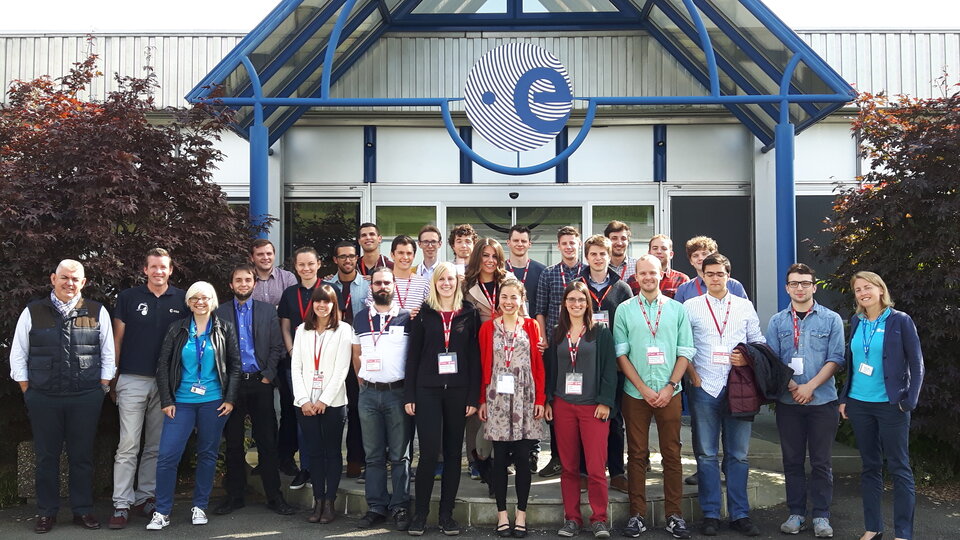ESA teaches students space design techniques
High-tech and nature came together perfectly from 20 to 23 September 2016. 22 University students from 15 different European countries joined forces at the ESA Academy - Training and Learning Centre in ESA Redu Centre, Belgium during the Concurrent Engineering Workshop 2016.
In concurrent design, all subsystems are designed in parallel. Solutions in one area that could have an impact in another must be identified and communicated instantly. It is a challenging way of designing, but quick and efficient. This is particularly good for space missions where industrial work is expensive, and where the science return is often pressing. The workshop introduced the students to this way of working and complemented what they are learning at university.
“The concurrent engineering method is excellent because the entire group works together for a common objective at the same time, but each subgroup works in different parts. The subgroups can share immediately issues and questions, which allows us to advance quickly. The method saves time and increases the efficiency,” said a student from Portugal.

On their first day of workshop, the students were gathered together to be introduced to Concurrent Engineering and how to use the Open Concurrent Design Tool (OCDT) by two experts from ESA’s Concurrent Design Facility (CDF), which is located at ESA’s technology centre, ESTEC in the Netherlands.
On the second day they were briefed about the mission they had to work on. They were to design a single small satellite that would rendezvous with Envisat, a large earth observation satellite launched by ESA in 2002 and that stopped working in 2012. The main objective of their small satellite was to determine how Envisat is tumbling through space in order to collect data for a future mission to de-orbit it. Their satellite should accomplish this task without any risk of collision, and then once the rotational rate has been determined, it should spend the rest of its lifetime making observations of Earth.

To design this mission, the students were split into ten teams. Each was responsible for a subsystem of the satellite, such as communication, or power, or optics. Not only they had to find the best solution, they also had to communicate these options to everyone else so that incompatibilities were rapidly recognised.
It was intense work with a steep learning curve but ultimately it proved to be an extremely rewarding experience. “It seemed difficult in the beginning but this workshop is a very good example of what 22 students can achieve in 4 days when they have the right tools and guidance from ESA experts,” said a student from Greece.
It wasn’t all work; the students also learned more about ESA and the other opportunities available for University students. They also toured the ESA Redu centre, so that they could better understand how satellites are operated in space.

“Having the chance to see the Redu facility and to learn about the ongoing activities there, as well as gain more of an insight into the ESA Academy’s other educational opportunities, has also been really enjoyable” said a student from U.K.
During the two last days, the students guided by the two ESA experts and supported by an expert from the International Space University (ISU) had the opportunity to perform two concurrent engineering iterations of their small satellite. Then each team made a final presentation to the rest of the group and a preliminary design was proposed.
“It was a great week. The students picked up the concurrent engineering methods and OCDT usage very quickly. Within two days they were converting requirements to functions, getting initial guesses inside the design model on product trees and doing design iterations, just like we do at ESA's CDF.” said one of the ESA experts.

The students were not the only people learning something. This pilot workshop gave ESA the opportunity to test and improve the tools that are under development for the ESA Academy CDF.
More workshops and training courses are planned. Check our future opportunities page for more information.
For more information contact: esa.academy @ esa.int





